
Posts Tagged: hummingbirds
What You May Not Know About Hummingbirds
Pollinators aren't just bees, butterflies, beetles and bats. They're also birds, like...
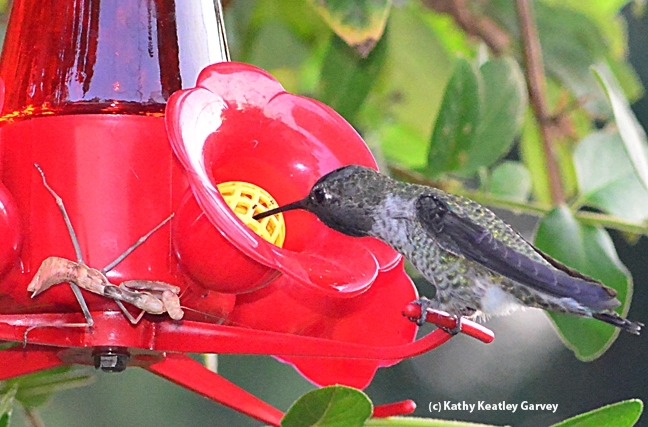
Hummingbirds eat insects and insects eat hummingbirds. Here a praying mantis lurks by a hummingbird feeder. It was quickly removed to another spot. (Photo by Kathy Keatley Garvey)
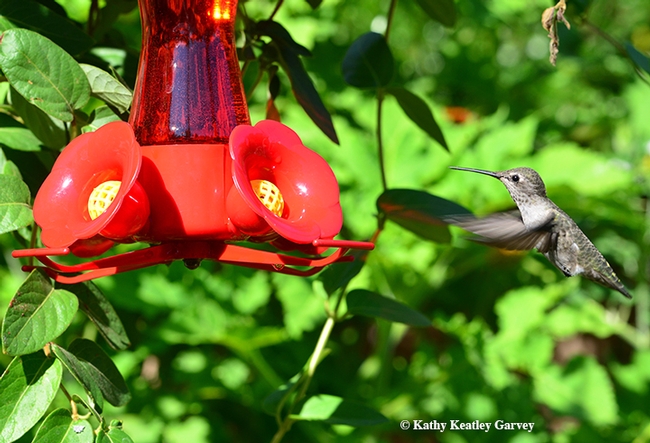
A hummingbird flies in for a quick burst of energy. It is best not to use red dye in a feeder; some companies make hummingbird feeders with red glass. (Photo by Kathy Keatley Garvey)
UC Davis Community Ecologist Rachel Vannette: Hellman Fellowship to Research Pollinator Microbiomes
Congratulations to community ecologist Rachel Vannette, assistant professor in the UC Davis...
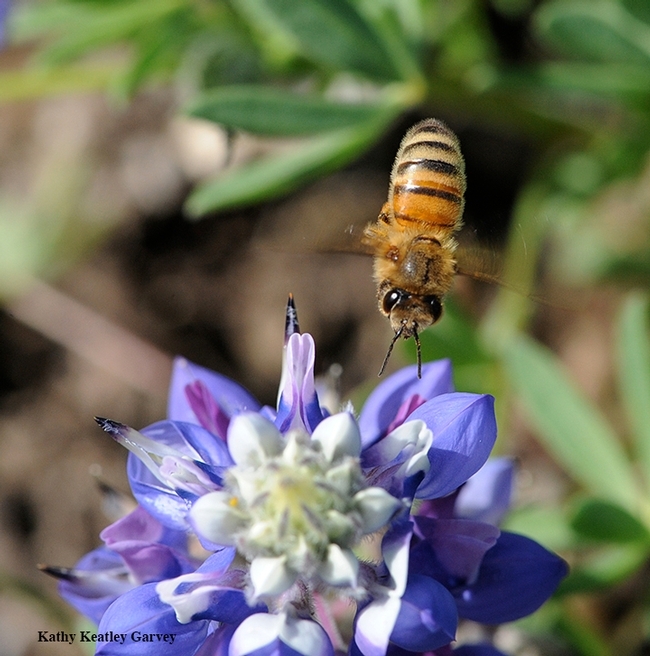
A honey bee heads for a lupine blossom. Nectar-living microbes release scents or volatile compounds, too, and can influence a pollinator’s foraging preference, according to UC Davis community ecologist Rachel Vannette, recipient of a Hellman Fellowship. (Photo by Kathy Keatley Garvey)
Watch Out!
The hummingbirds seemed apprehensive. They'd fly to the feeder, stop in mid-air, and turn...

A praying mantis is sprawled out on a hummingbird feeder, as a hummer takes a drink. (Photo by Kathy Keatley Garvey)

The praying mantis moves to another spot. (Photo by Kathy Keatley Garvey)
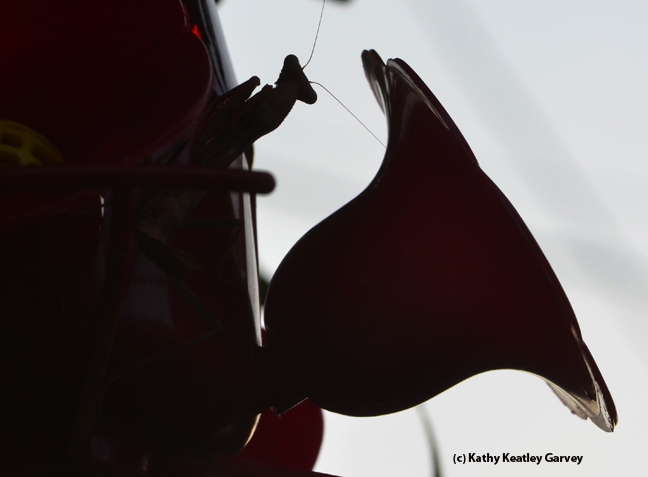
Silhouette of the praying mantis lying in wait. (Photo by Kathy Keatley Garvey)
Dining Where They're Not Wanted
If your hummingbird feeders are filled with that oh-so-tantalizing sweet sugary syrup, you may be...

Honey bees licking the surface of a hummingbird feeder. (Photo by Kathy Keatley Garvey)

Hummers can reach this syrup but the bees cannot. (Photo by Kathy Keatley Garvey)
Hummingbirds are noisy romancers
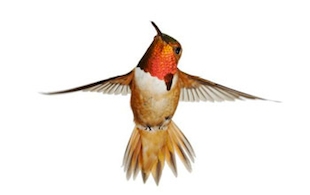
Forget bird watching; next time you spot a hummingbird, listen.
Most of us pause to gaze at the tiny birds’ impressive mid-air hovering, part of their hunting behavior, but males of some hummingbird species generate loud sounds with their tail feathers while courting females.
Now, for the first time, the cause of these sounds has been identified: a paper published in the Sept. 9, 2011, issue of Science reveals that air flowing past the tail feathers of a male hummingbird makes his tail feathers flutter and thereby generate fluttering sounds.
Watch a video of hummingbird tail feathers in an wind tunnel.
Male hummingbirds only produce fluttering sounds during their elaborate courtship rituals. Typically, during such a display, a male hummingbird will climb into the air five to 40 meters, and then quickly dive-bomb down past a perched female; when the courting male bird reaches the lowest point of his dive, he rapidly spreads and then closes his tail feathers. This spreading exposes the tail feathers to air, which causes them to flutter and generate sound, according to Christopher Clark of Yale University, lead author of the study.
Clark's research, which he began as a graduate student at the University of California, Berkeley, shows that the males of each hummingbird species have their own signature sound — largely determined by whether and how the fluttering frequencies of its different tail feathers interact with one another and blend together.
Other factors, such as the size, shape, mass and stiffness of the hummingbird's feathers, also help determine the tone of each species' particular sound.
In addition to diving during courtship rituals, a male hummingbird may also brandish showy ornaments and produce sounds from other feathers besides his tail feathers.
All this, just to impress that special lady.
Clark analyzed the fluttering sounds of hummingbird feathers by measuring the fluttering feathers with a Scanning Laser Doppler Vibrometer — an instrument that is used to measure the vibrations of a surface — and by viewing high speed videos of the tail feathers of hummingbirds in a wind tunnel.
The study was co-authored by Damian Elias, also of UC Berkeley.
— Adapted from a story by the National Science Foundation.
